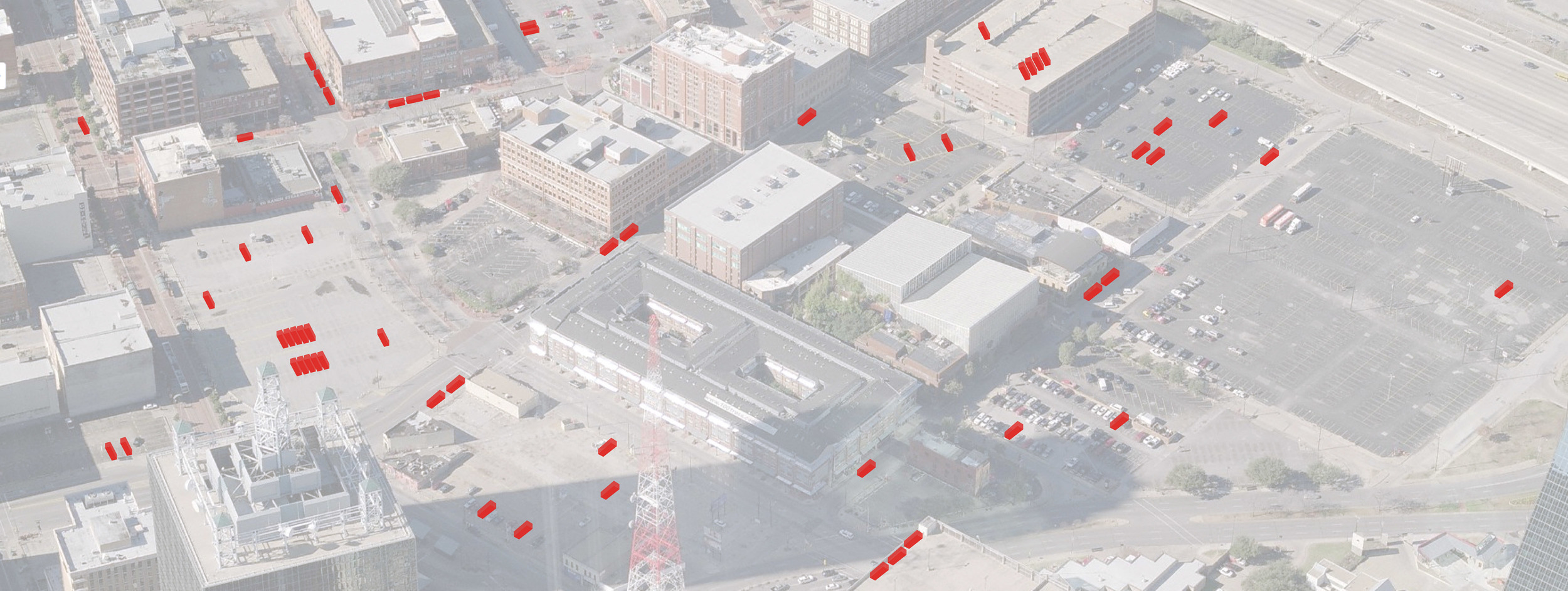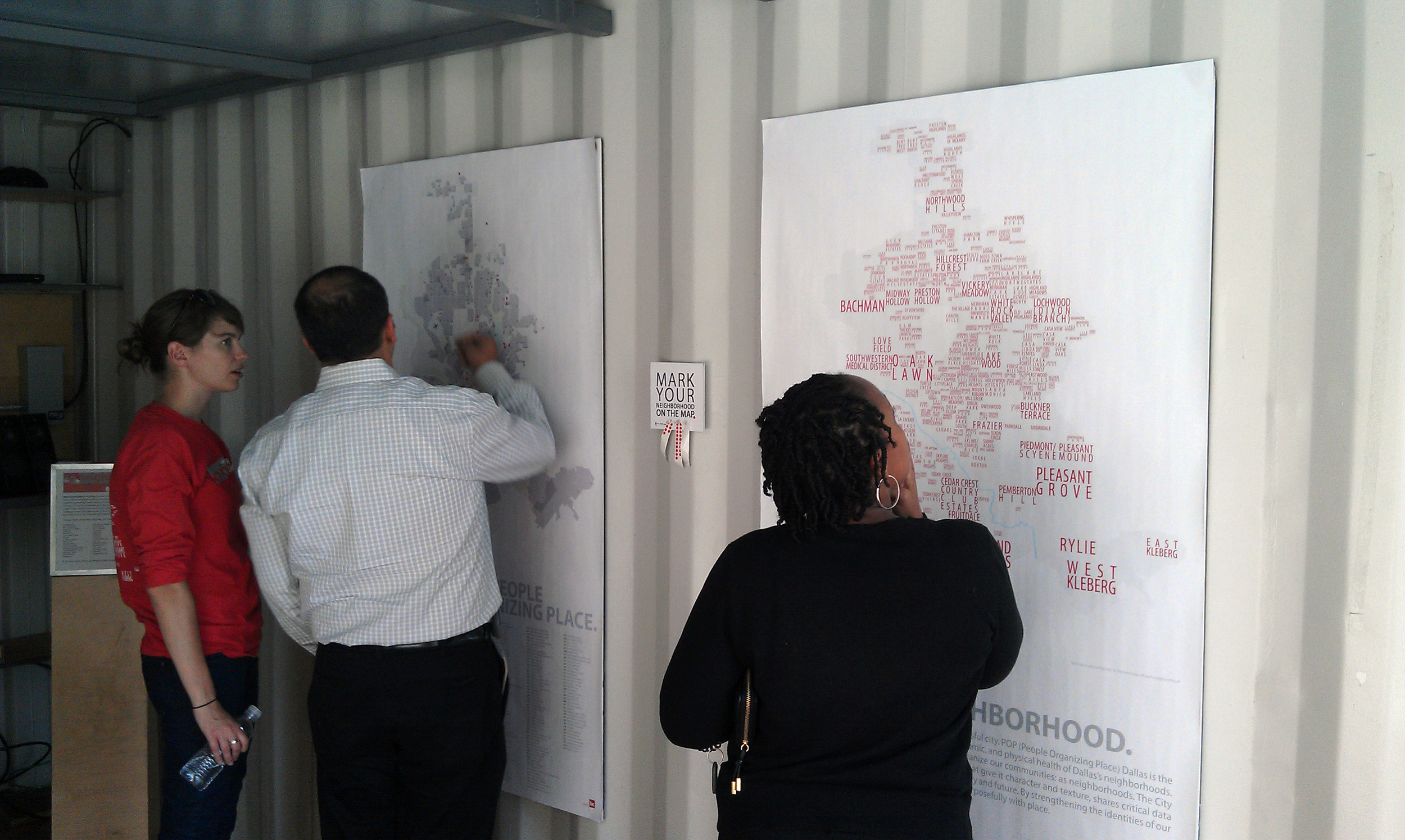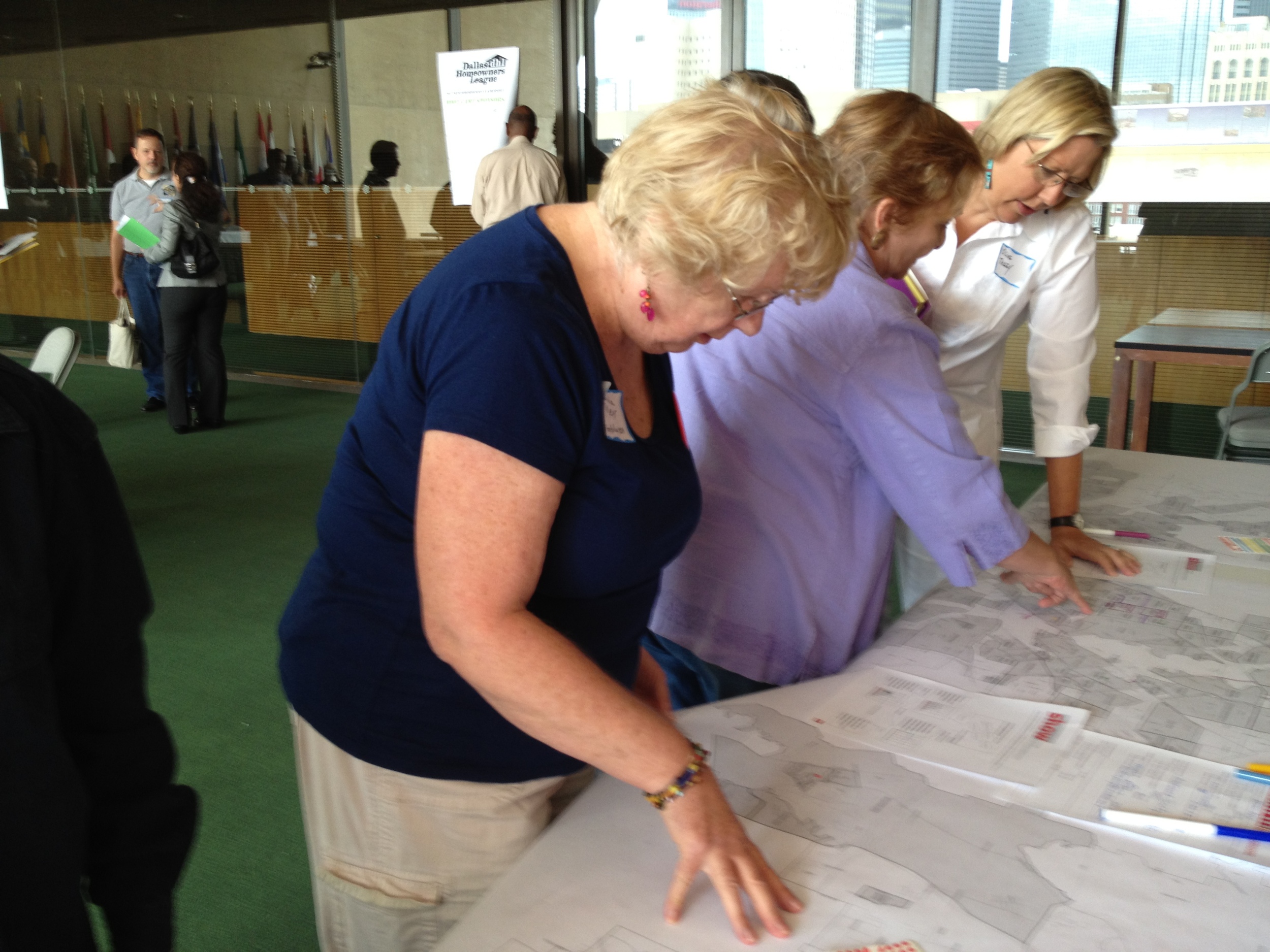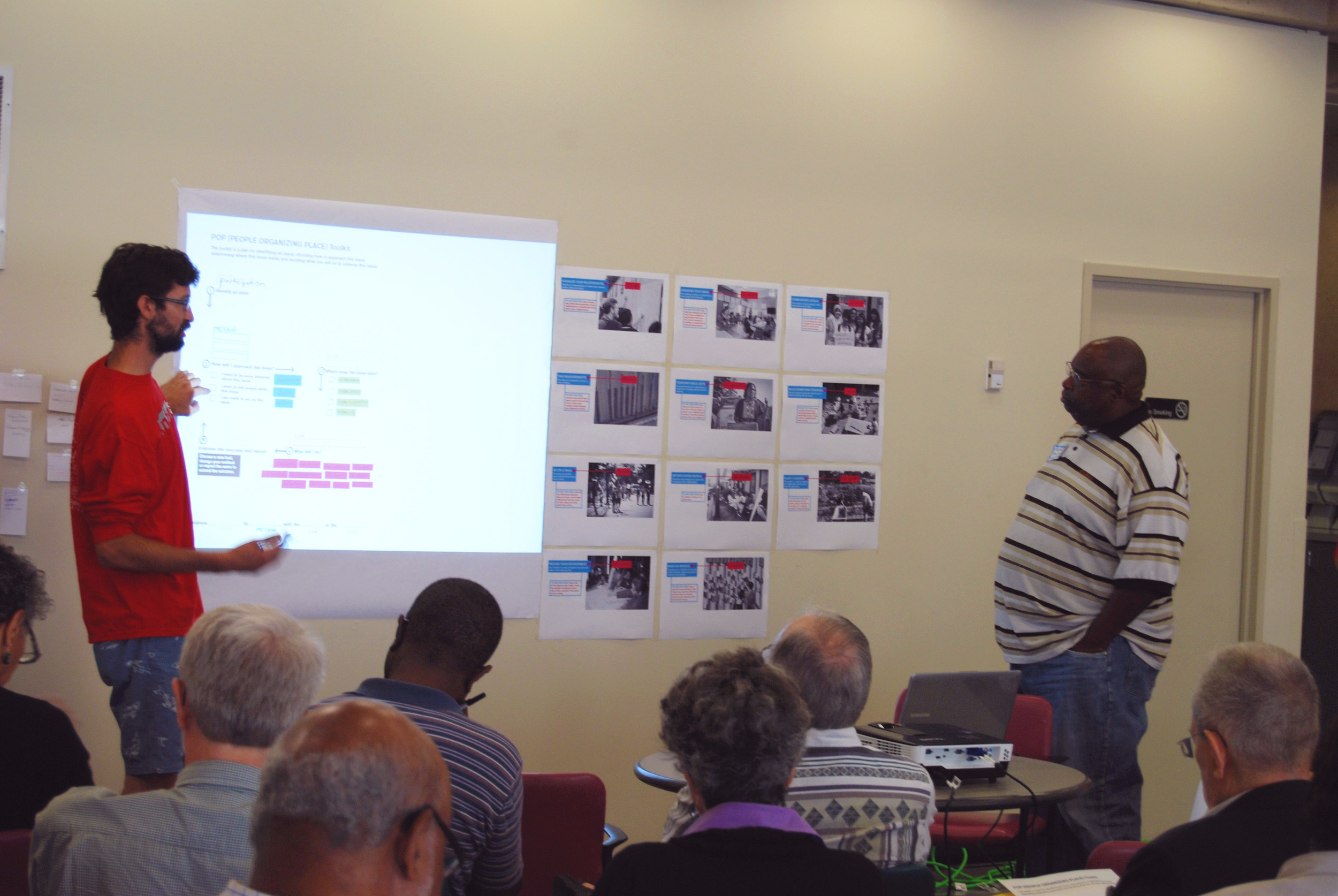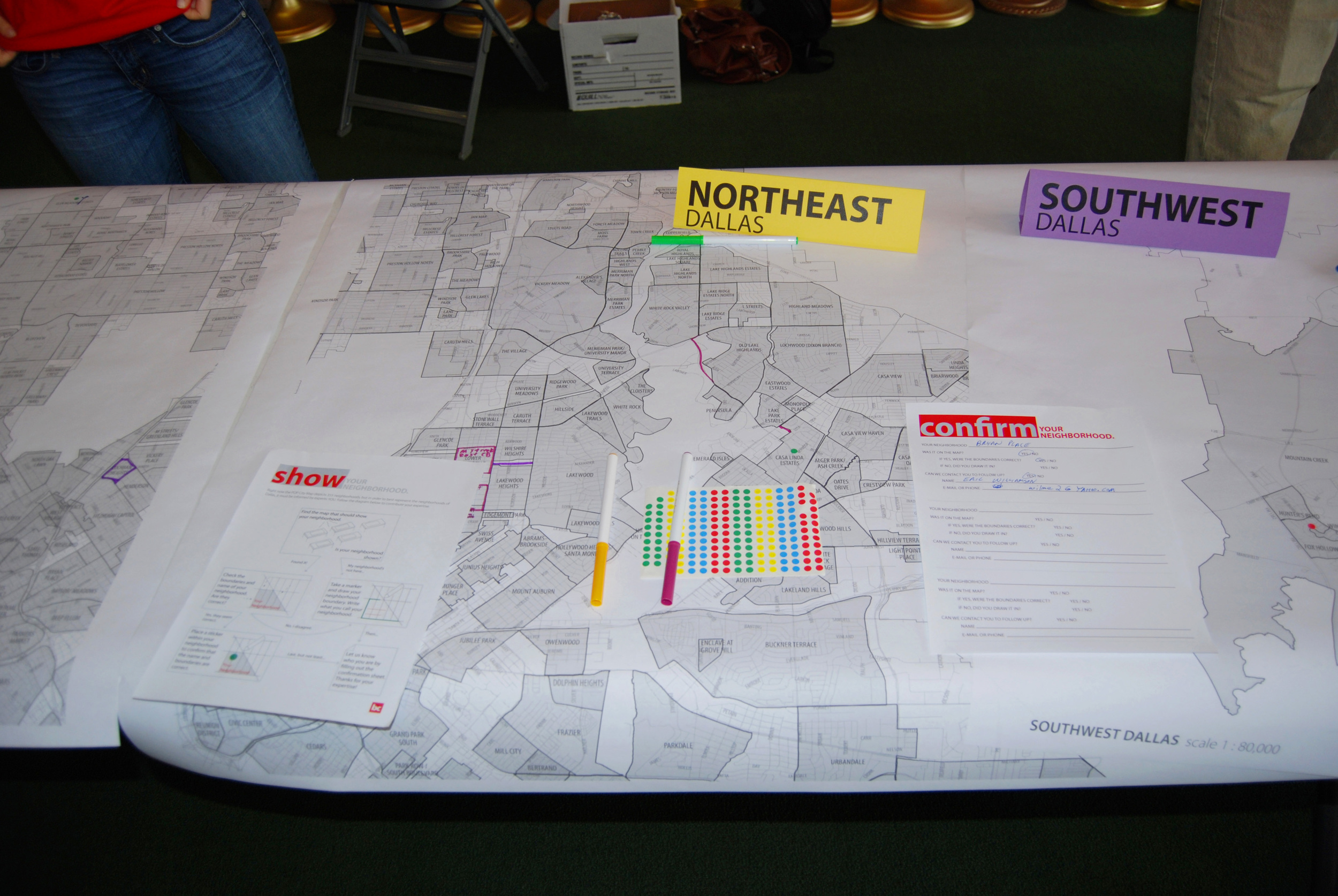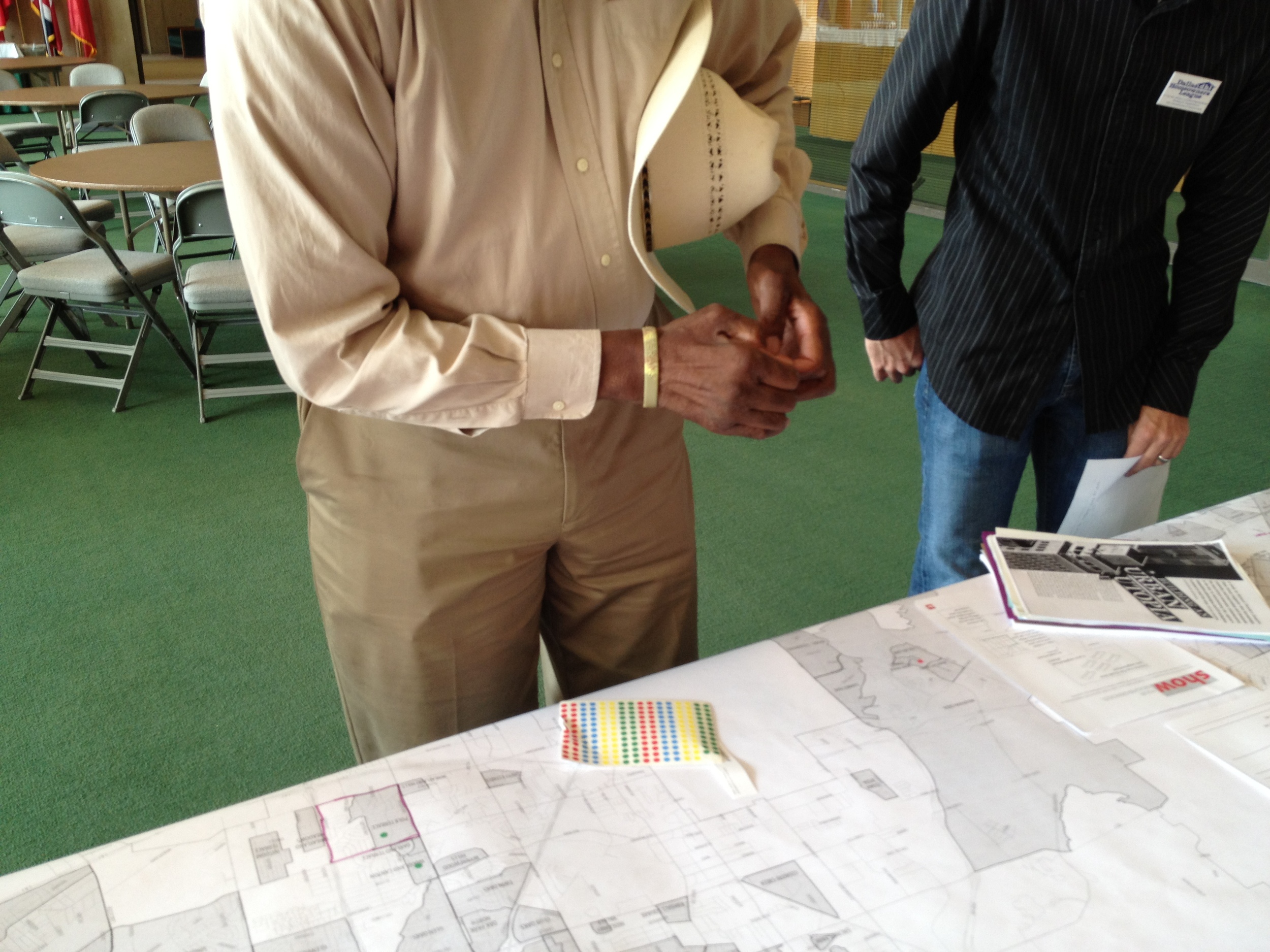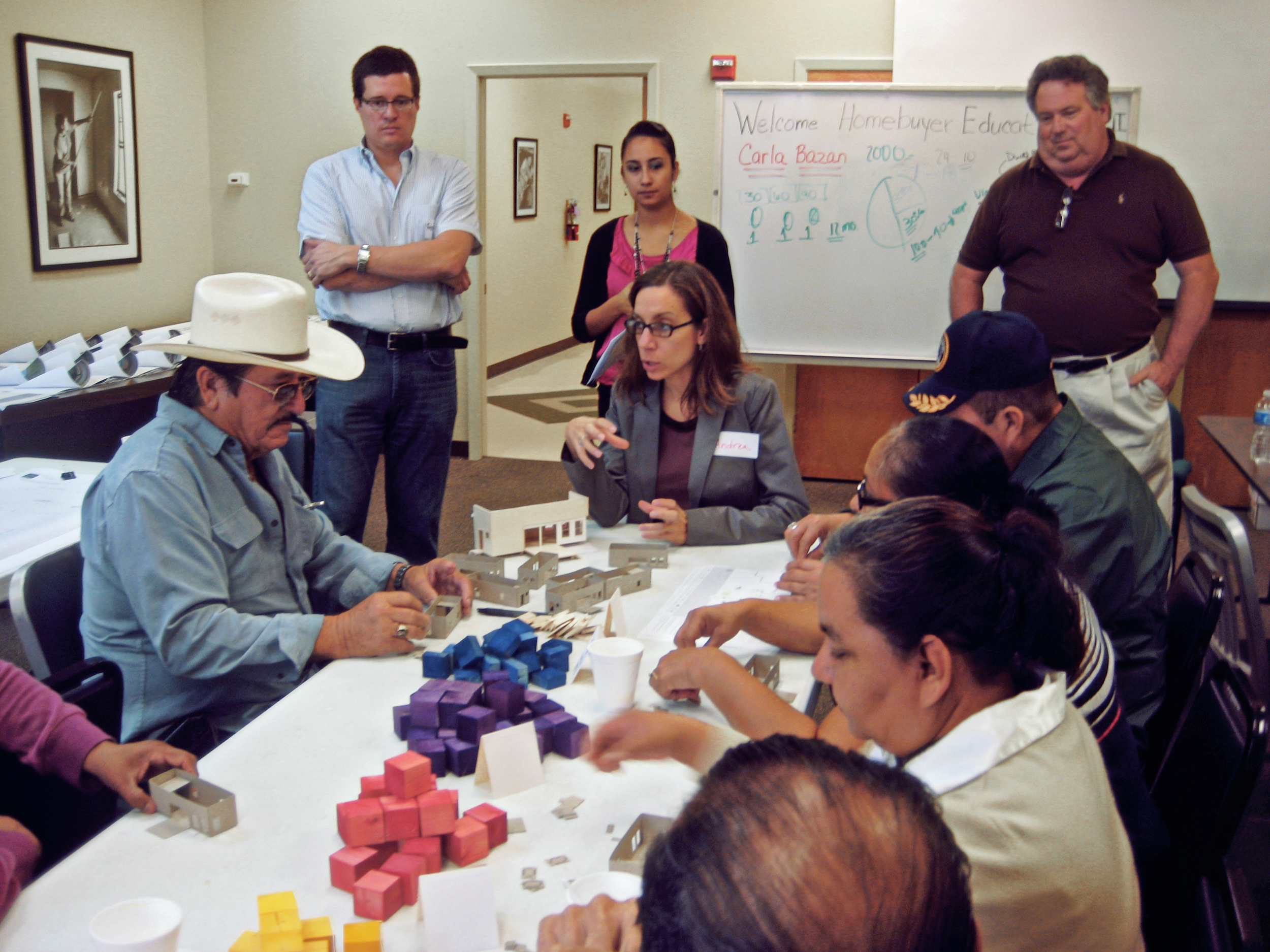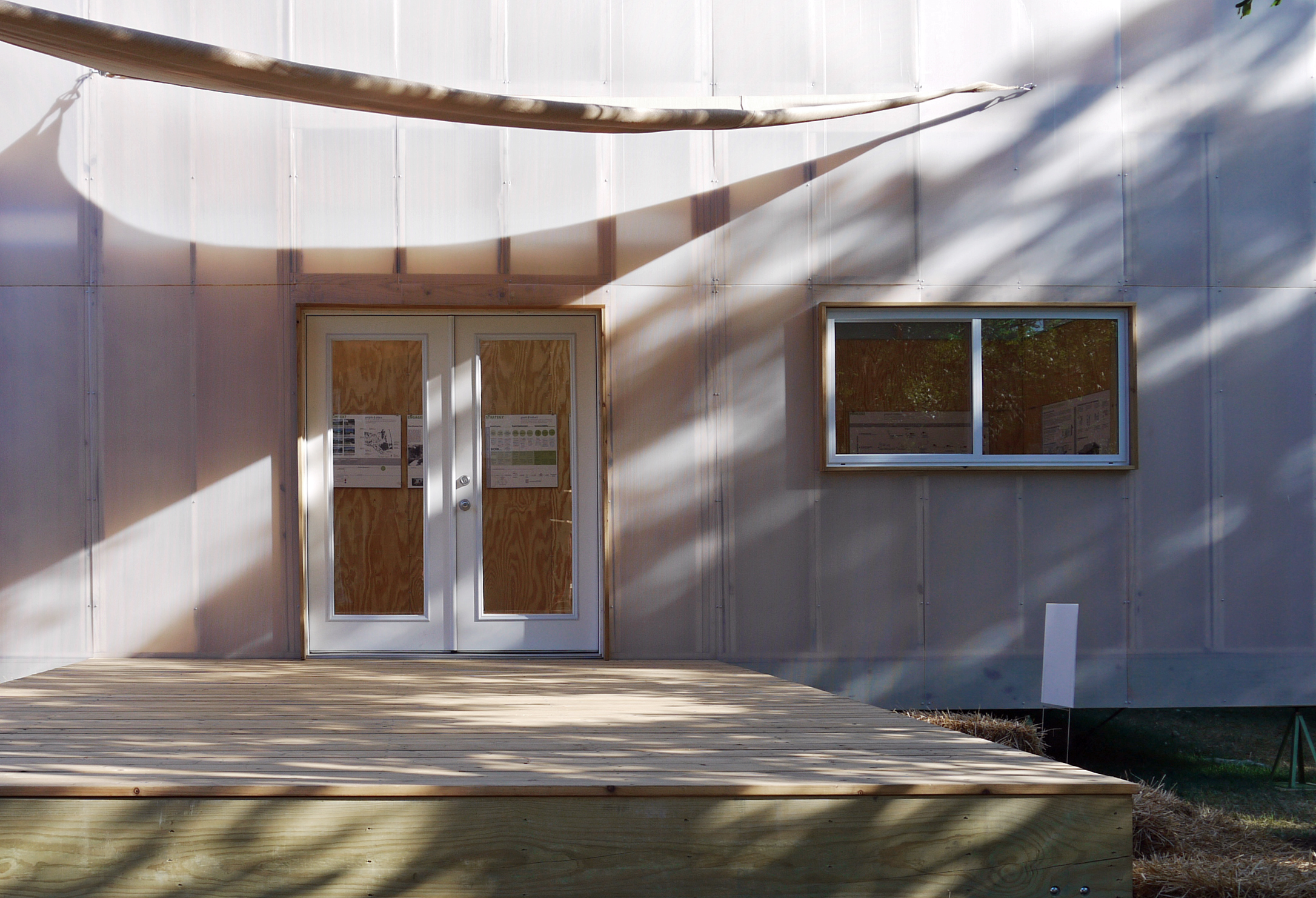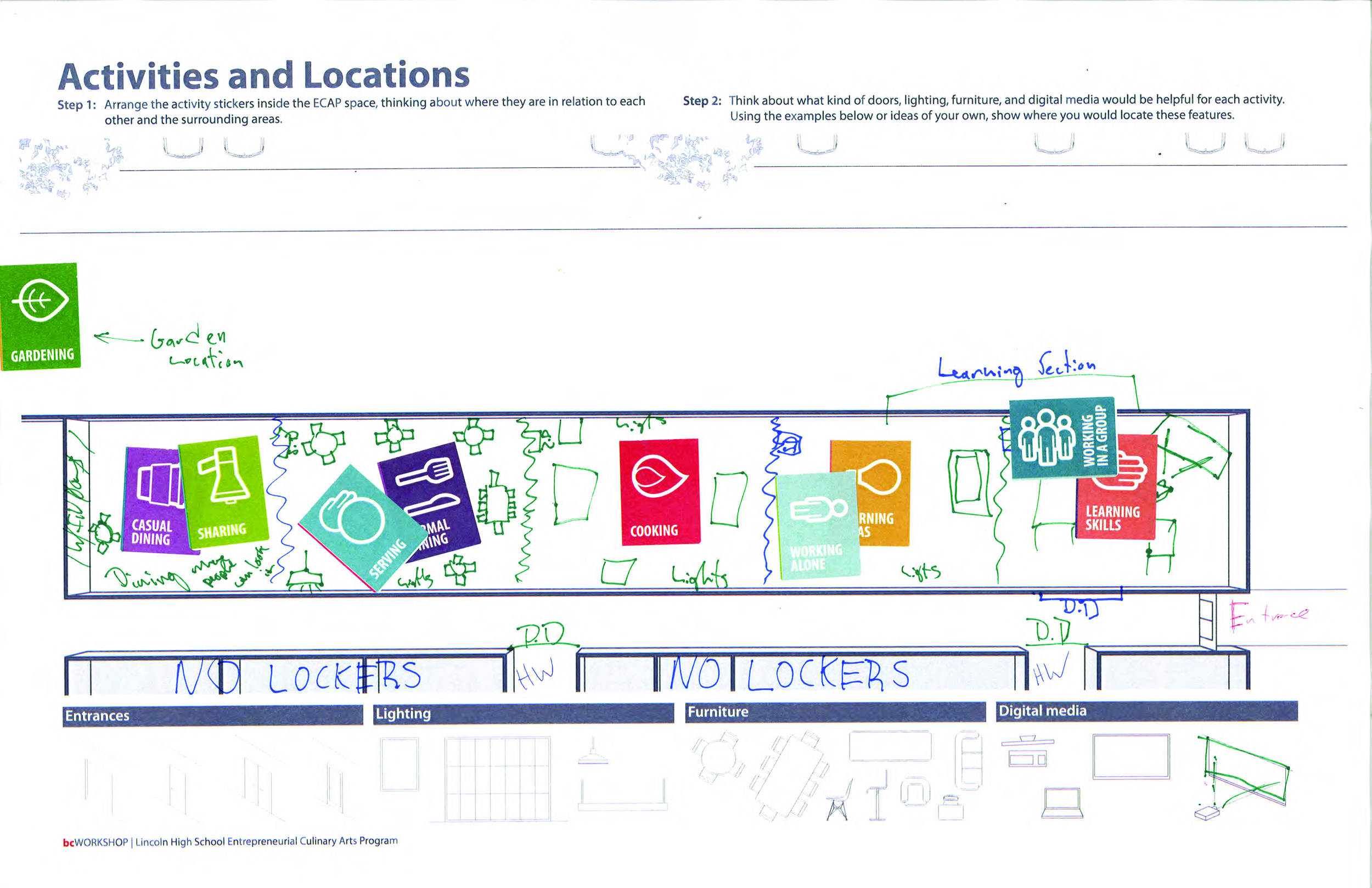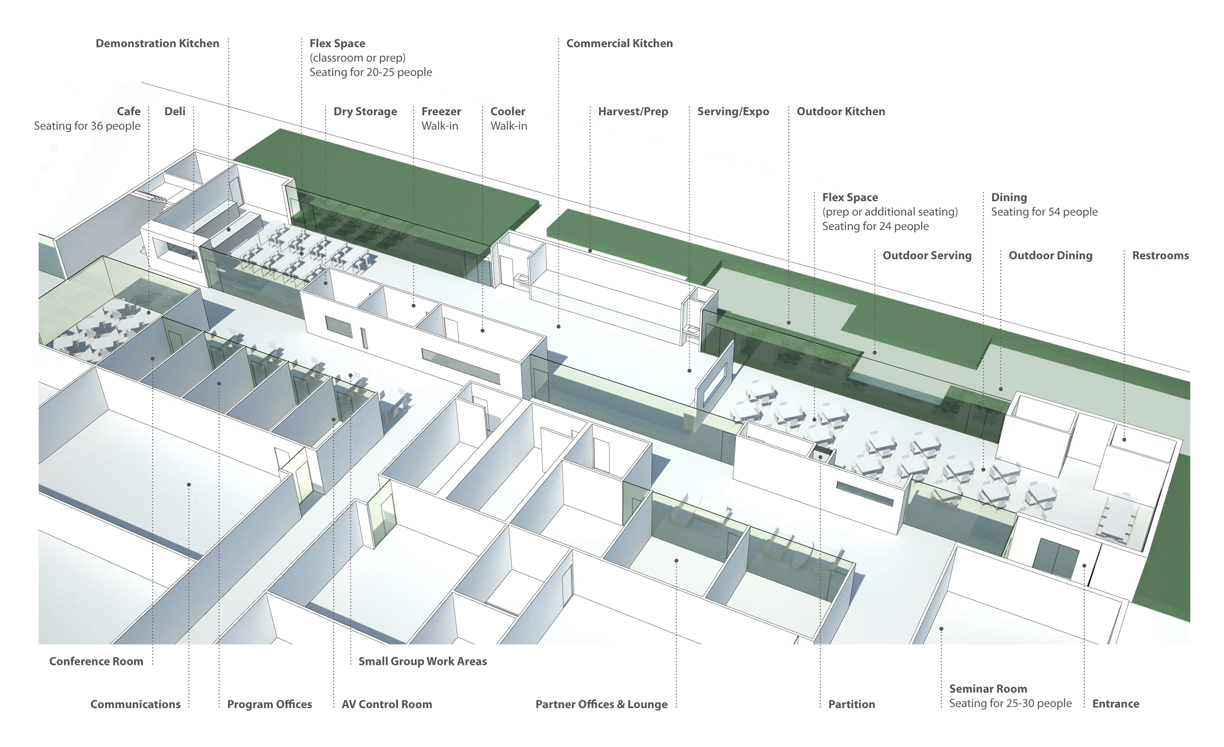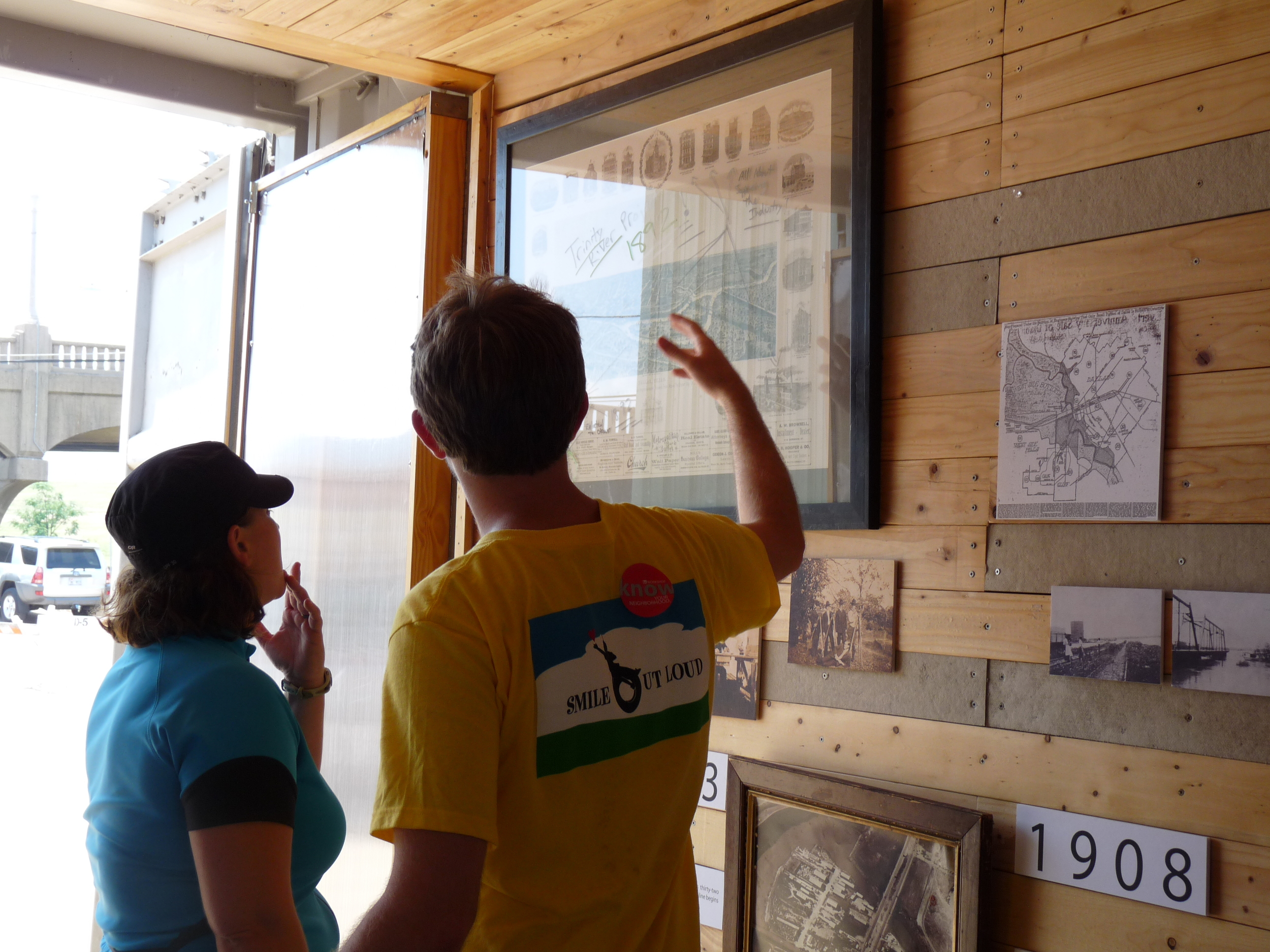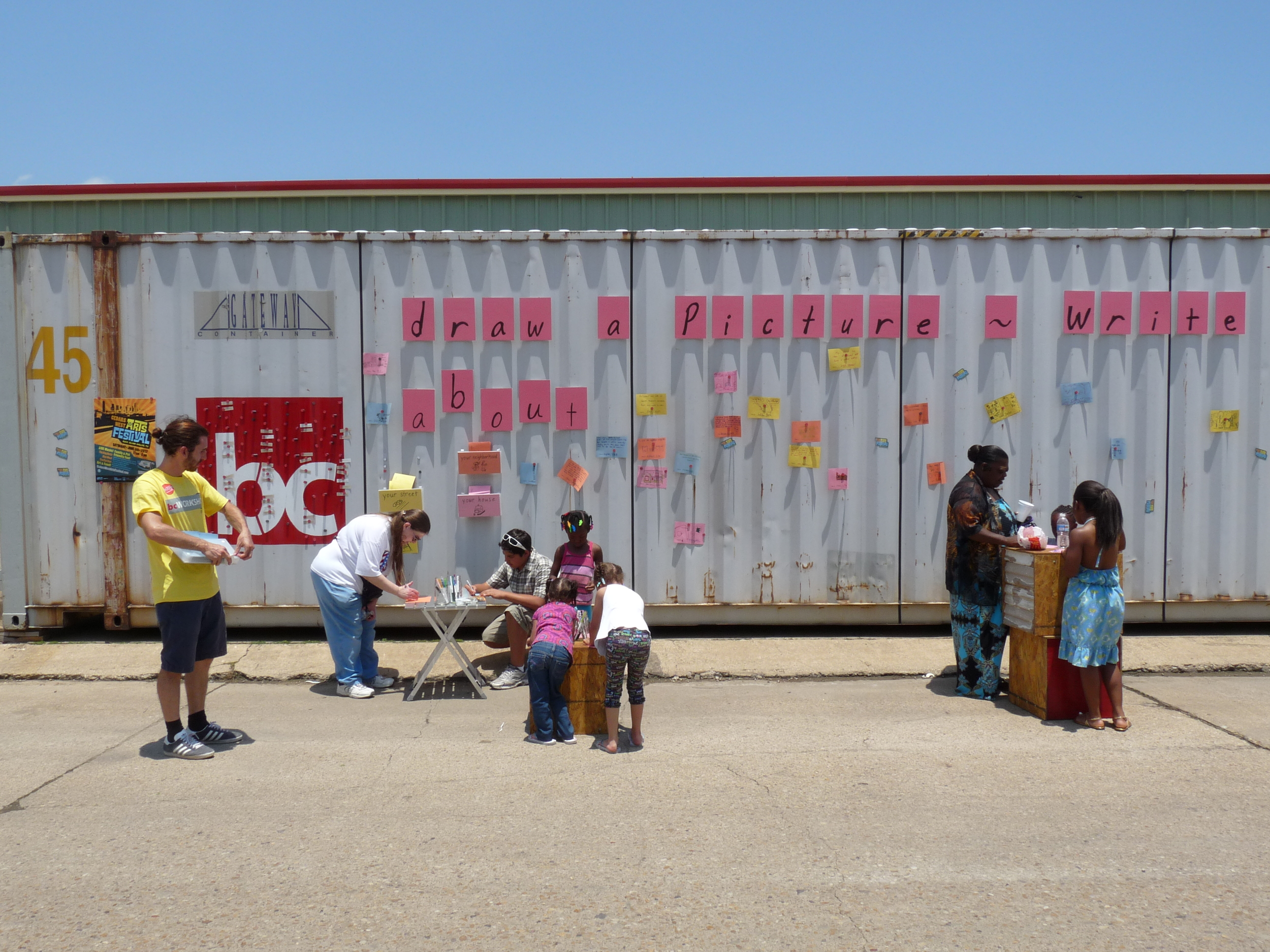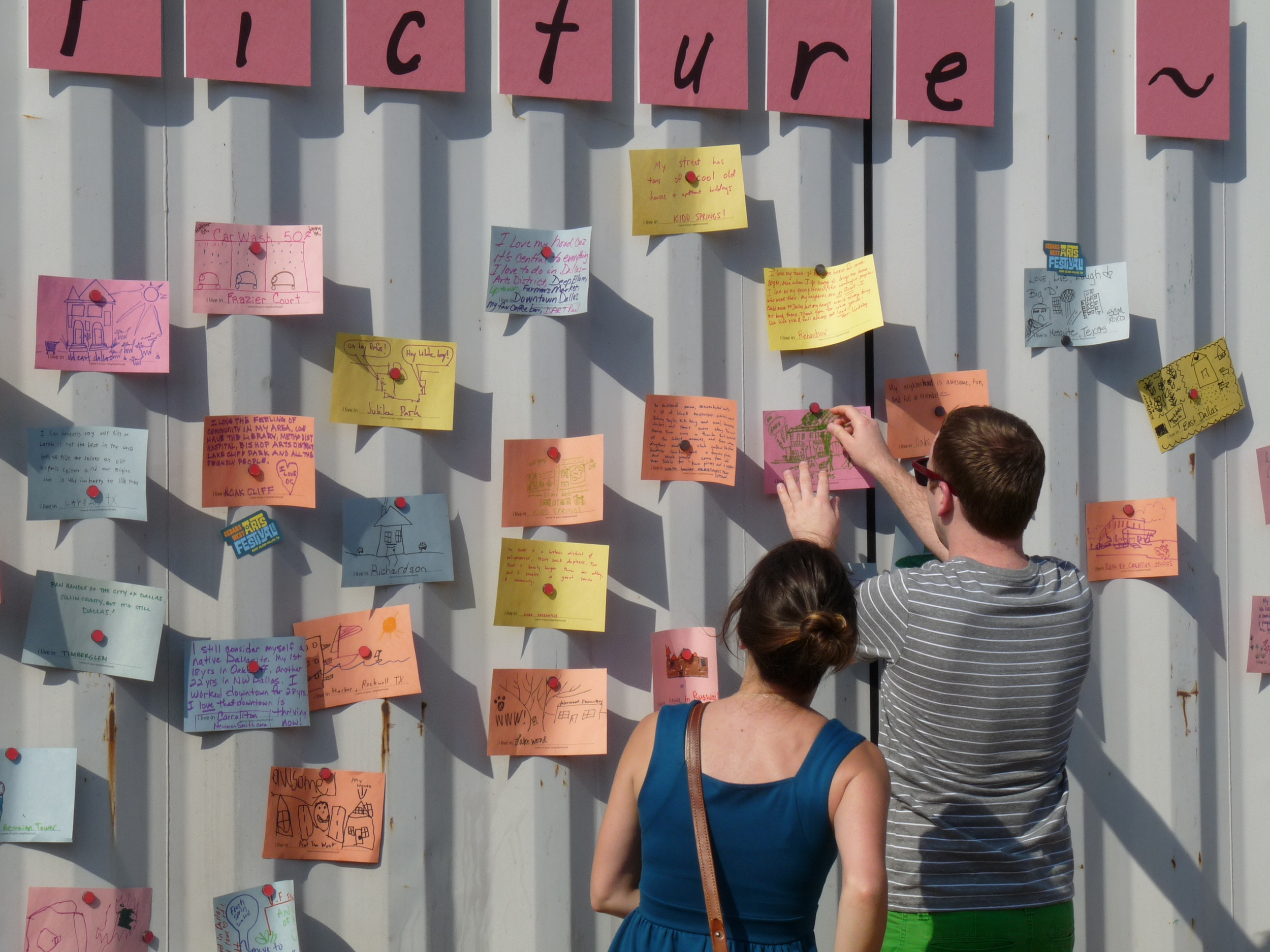Learn more about our work in Dallas.
Surrounded by freeways, the skyline of downtown Dallas rises from a sea of concrete and asphalt. Public parks lie scattered across this landscape, accounting for less than five percent of the urban geography. In opposition, downtown over-accommodates a perceived lack of parking by dedicating twenty-seven percent of surface to vehicular storage. The disproportion between these two landscapes has created an opportunity to rebalance the relationship between the pedestrian and the vehicle; this opportunity is the parklet.
The parklet is a type of urban space that supplements people’s access to places for rest and social interaction. Inserted into the gaps in-between downtown’s sanctioned parks, it creates new public space where once only a vehicle could reside. It extends the sidewalk as space is carved from conventional parking, reclaiming the street from the automobile for the pedestrian. An outgrowth of the PARK(ing) Day movement, the art and design studio Rebar pioneered the first parklet in San Francisco. Since then, the idea has spread to other cities such as Chicago and Los Angeles.
The parklet is both temporal and permanent, dynamic yet anchored. Designed as a set of components, the parklet can be deployed on any street, bringing vibrancy to the sidewalk and the block, and then moved to facilitate activity elsewhere. The individual pieces can be disassembled and moved via truck or trailer, then joined together again in a new location.
The parklet creates the amenities of the city at a fine scale: it is shelter from the sun, a café, a garden, a, bench, a storefront, the chance encounter. When it is deployed, the parklet is open to all no matter where it is. While the space is intimate, different furniture types can be added and rearranged to change the program of the parklet. Benches are worked into the design of the mobile planters, bringing visitors closer to the fragrant herbs and flowers growing from the natural cedar beds.
Developed in partnership with Downtown Dallas, Incorporated, Dallas's first parklet made its initial appearance on PARK(ing) Day 2012 in front of bcWORKSHOP's office on South Ervay. The parklet will continue to appear there and elsewhere around downtown's parking spaces, serving the public wherever it goes.
![[bc]](http://images.squarespace-cdn.com/content/v1/5248ebd5e4b0240948a6ceff/1412268209242-TTW0GOFNZPDW9PV7QFXD/bcW_square+big.jpg?format=1000w)


